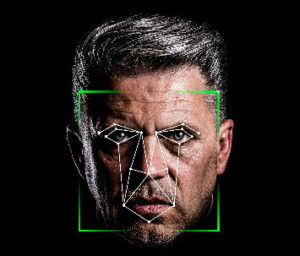In this article I would like to step away a bit from computer vision and talk about education at university/college level and how I hope it won’t change too much as we (hopefully) slowly recover from the coronavirus pandemic (at least here in Australia).
I bumped into a colleague of mine from Carnegie Mellon University last week while having coffee outside the nearby cafe in town. We got talking about the usual things and then the topic ventured, of necessity, towards COVID-19 and how things will change post-pandemic. For example, we’re already seeing remote work opportunities being given permanent status in some firms because (finally) benefits for both employers and employees are being recognised. But my colleague and I then started talking about how things might change at our university. Perhaps students at CMU should be given more opportunities to attend lectures remotely even when the necessity for social distancing will be removed? This is an interesting question, centred around this whole idea of distance learning, that has been discussed for decades. My colleague and I talked about it for a little bit, too.
The benefits of such a plan (for distance learning) are easily discernible: e.g. there is no longer the necessity for students and lecturers to commute to a campus or even to reside in a given country; or there is the benefit of the university not needing to maintain as many facilities or equipment on campus, thus saving money that could be put into many other things to improve the learning experience.
The drawbacks of distance learning are also fairly well know: e.g. it is more difficult for students to get motivated and project work involving teams are much more cumbersome to complete, let alone do well.
But in this whole debate on the benefits and drawbacks of remote learning I think one thing is being significantly disregarded: class dynamics. This is what I would like to write about in this article.
Before I continue, I need to define what I mean by “class dynamics”. Class dynamics, at least the way that I will be using it here, is a certain atmosphere or ambience that can be set up in a classroom/lecture environment that can foster or impede the interaction that can take place between a pedagogue and their students. There are many factors that contribute to class dynamics. For example, the attitude and mood of the interlocutor, the attitudes and moods of the students, the topics being discussed, etc.
Class dynamics is just so important. It can significantly affect the learning outcomes of students. It can be the decisive factor between good class engagement and no class engagement. It can be the decisive factor between students coming to seek out the lecturer after a session to delve deeper into a topic or to have things explained further. All of this will have an impact on the teacher as well. He will be spurred on by a positive class engagement and find satisfaction in what he is doing. And then this contentment will flow over onto the students even more and boost their satisfaction. Class dynamics affects the students and teachers in a cyclical way. Like I said, it is just so important.
Since the beginning of the pandemic, I have delivered countless lectures via video conference. Yes, it has been convenient in many respects (e.g. I have worn comfy pyjamas and slippers on my bottom half) but I have come to truly appreciate what a physical classroom environment really gives towards the whole educational experience, predominantly in the context of class dynamics.
Indeed, physical presence just gives so much. Firstly, there is the notion of body language. We’ve all heard just how much body language can convey. It truly can communicate a lot. Little reactions to things I’m saying, people turning around to others at particular moments to seek explanation, slouching – things that a camera cannot properly capture. We read body language and consciously or subconsciously react to it. A good pedagogue will be able to react accordingly and steer discussions or lectures in the right direction to keep people’s attention at full capacity or to notice when concepts need to be reiterated perhaps in a different way. You lose all (or at least most) of this when you’re delivering lectures via video conference. I miss this aspect so much. I just can’t read my students’ “presence” in a given lecture at all. And it’s seriously draining and detrimental to all involved. Especially since concepts in computer science (and science in general) build on top of each other. So, whether a student grasps something now will have a knock on effect for any future classes he/she will attend.
Class dynamics is paramount. And it is fostered by physical presence.
Something else that contributes to class dynamics is the building up of a community in a class. When students attend a campus in person they can get to know each other so much better. They can “hang out” after class or in the evenings and friendships can be formed. Classroom interaction becomes so much better when everyone is relaxed around each other! When you teach via video conference the ability to form a community is significantly diminished. Everyone loses out.
These are really important points to consider. Because, ultimately, with learning via video conferencing the students, the class dynamic, the relationships between the pedagague and his pupils, the entire learning experience gets flattened into two-dimensions much like everyone’s face on the screen in front of you.
So much is lost.
And it’s, hence, important to think about this when weighing up the pros and cons of distance learning. We want to keep the standards at our universities/colleges high while, of course, maintaining costs at a minimum and leisure at a maximum. Class dynamics cannot be ignored even though it is difficult to measure and put into argument form when discussing these things with the people in charge. But it has to be discussed and argued for, especially when it looks like the world will slowly be returning to normality in the near future.
To be informed when new content like this is posted, subscribe to the mailing list:




One Reply to “Loss of Class Dynamics Amid Distance Learning”